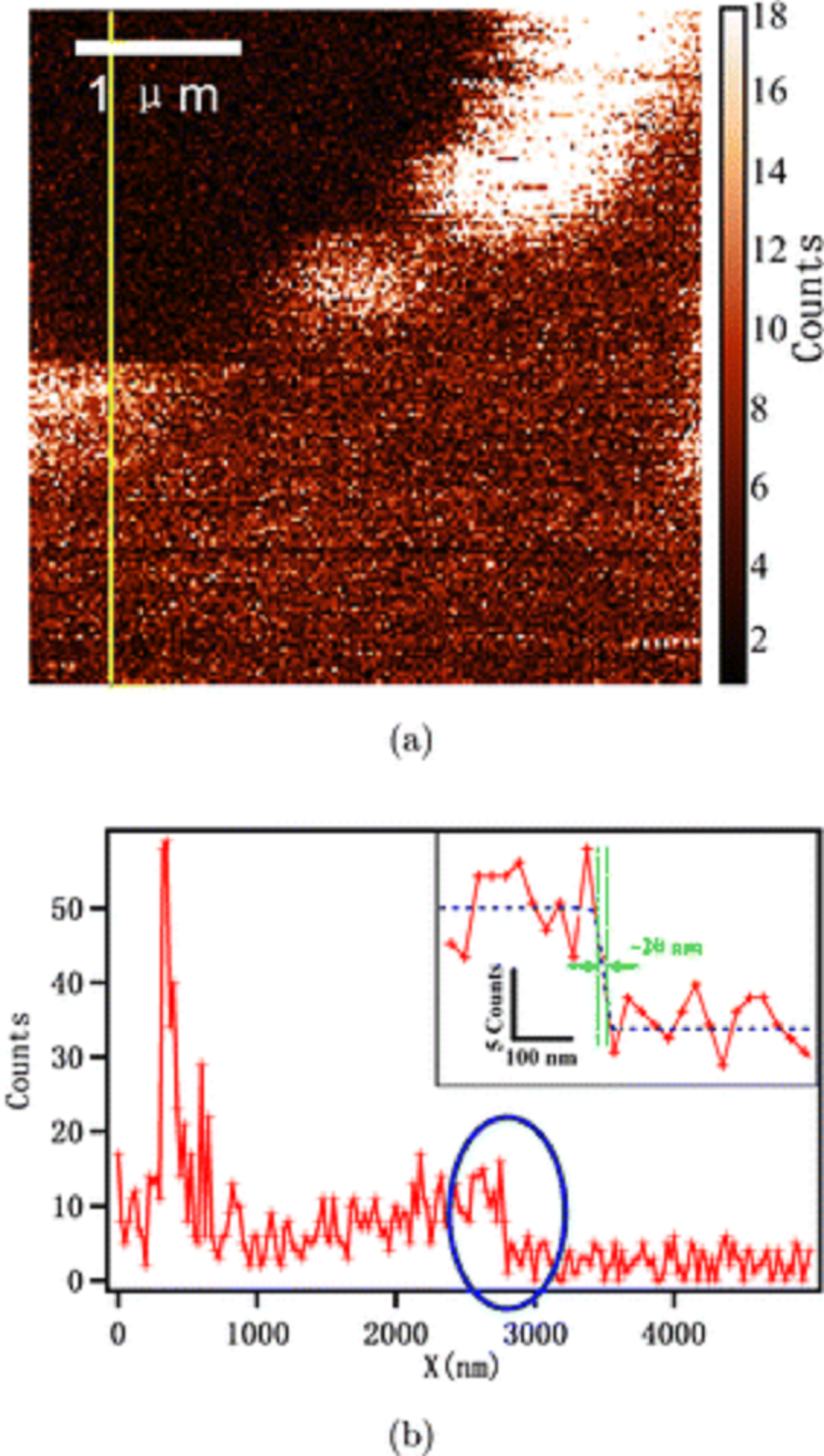In their research article “High-resolution imaging of graphene by tip-enhanced coherent anti-Stokes Raman scattering” Xiaolong Kou, Qian Zhou, Dong Wang, Jinghe Yuan, Xiaohong Fang and Lijun Wan report how they achieved the first single atom layer TECARS (tip-enhanced coherent anti-Stokes Raman scattering ) imaging on Graphene with the highest resolution about 20nm.*
The authors used a NANOSENSORS AdvancedTEC™ ATEC-NC AFM tip that they coated with a 20nm Au coating by E-beam evaporation.
With some technological improvements TECARS imaging could be a promising tool for the study of the biochemistry of materials and live cells at the molecular and subcellular levels without labelling as well as other biological, chemical and medical applications.*

Fig. 6. from “High-resolution imaging of graphene by tip-enhanced coherent anti-Stokes Raman scattering “ by Xiaolong Kou et al. :
(a) TECARS imaging of graphene. (b) Signal intensity measurement of the yellow line in (a).
*Xiaolong Kou, Qian Zhou, Dong Wang, Jinghe Yuan, Xiaohong Fang, Lijun Wan
High-resolution imaging of graphene by tip-enhanced coherent anti-Stokes Raman scattering
Journal of Innovative Optical Health Sciences, Vol. 12, No. 01, 1841003 (2019)
DOI: https://doi.org/10.1142/S1793545818410031
Please follow this external link for the full research article: https://www.worldscientific.com/doi/full/10.1142/S1793545818410031
Open Access The article “High-resolution imaging of graphene by tip-enhanced coherent anti-Stokes Raman scattering” by Xiaolong Kou, Qian Zhou, Dong Wang, Jinghe Yuan, Xiaohong Fang and Lijun Wan is licensed under a Creative Commons Attribution 4.0 International License, which permits use, sharing, adaptation, distribution and reproduction in any medium or format, as long as you give appropriate credit to the original author(s) and the source, provide a link to the Creative Commons license, and indicate if changes were made. The images or other third party material in this article are included in the article’s Creative Commons license, unless indicated otherwise in a credit line to the material. If material is not included in the article’s Creative Commons license and your intended use is not permitted by statutory regulation or exceeds the permitted use, you will need to obtain permission directly from the copyright holder. To view a copy of this license, visit http://creativecommons.org/licenses/by/4.0/